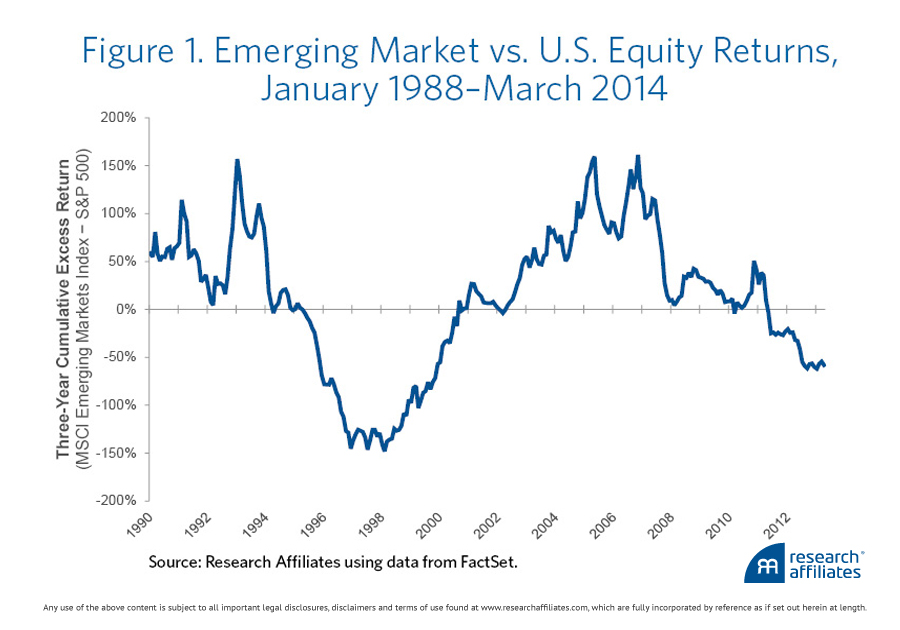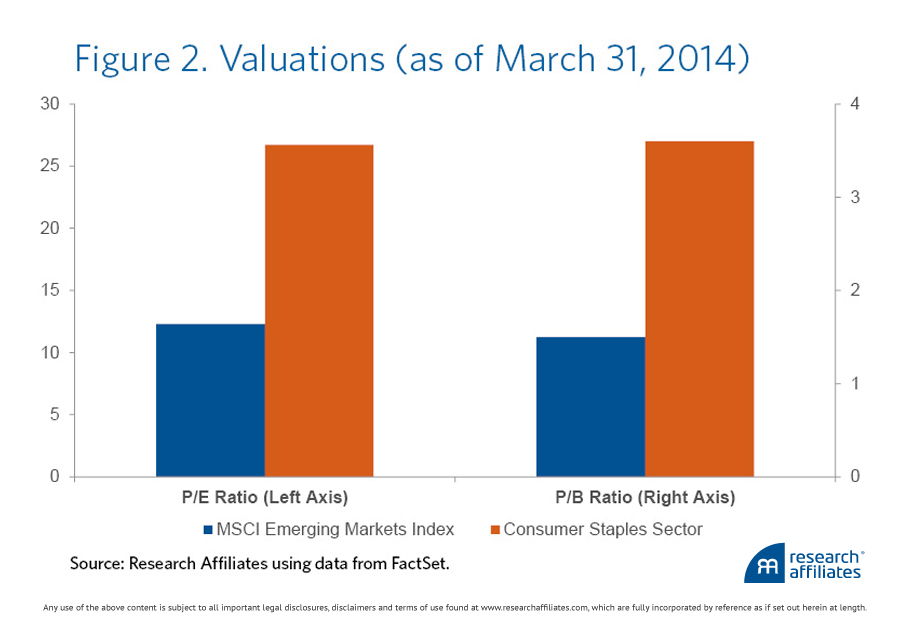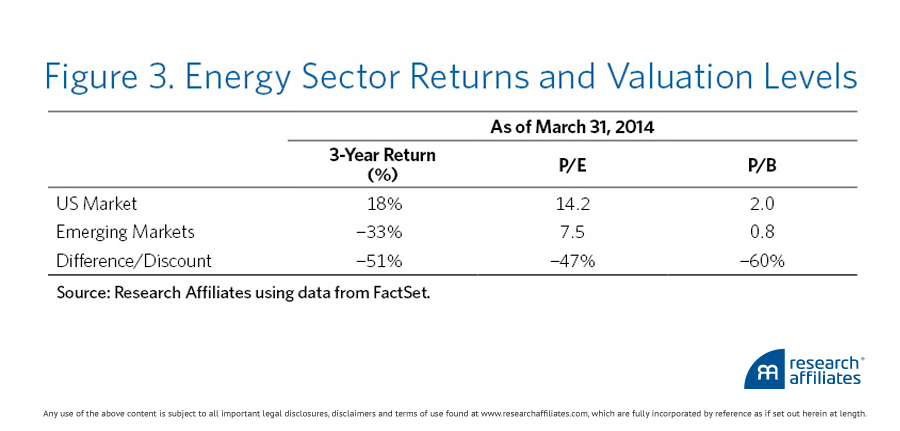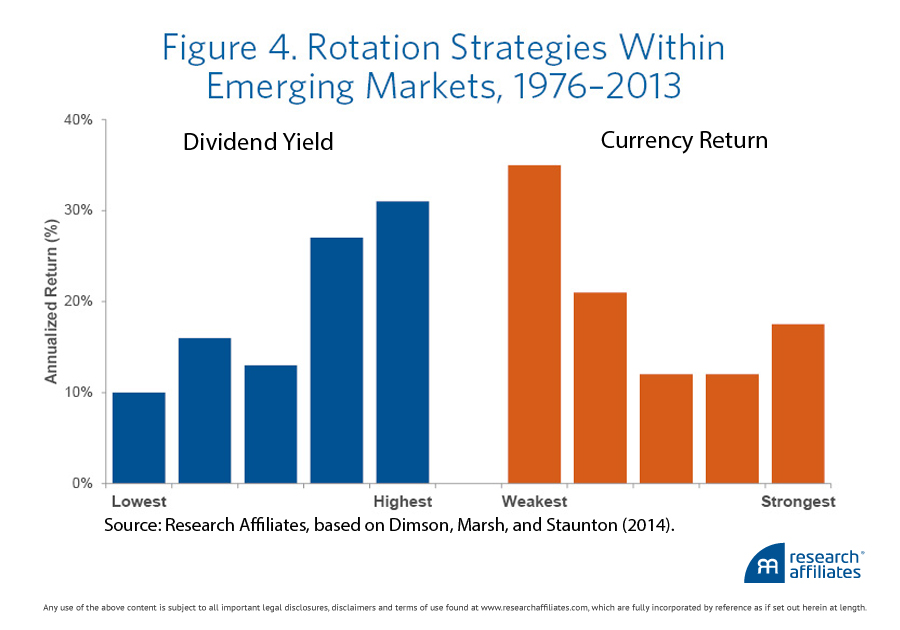
As the father of two girls under the age of six, I spend a lot of time reading children’s books. One of my daughters’ favorite characters is Clifford. For those of you who haven’t read these stories, Clifford isn’t just a Big Red Dog, he’s a REAL BIG DOG, the size of a house. An early book in the series covers some of Clifford’s obvious faults, mostly due to his being unaware of the effects of his massive size: he chases and catches cars, carries back a policeman thinking his baton is a stick, eats the shoe sign outside a shoe store, and devours a lot of cupcakes. Despite all his flaws, Clifford is dearly loved by Emily Elizabeth, the little girl who takes care of him. She says, “I’d choose Clifford, wouldn’t you?”
Emerging markets, like Clifford, have grown rapidly, and their increased scale can cause quite a ruckus when they stumble. They have certainly displayed plenty of flaws over the past three years: slowing economic growth (especially in China), current account deficits in the “Fragile Five” (Turkey, Brazil, India, South Africa, and Indonesia), and declining currencies due to a rising default-free rate in the United States, among other things. Nonetheless, long-term investors should seriously consider choosing emerging market value stocks.
Emerging Market Performance
Not since the Asian Contagion and Russian ruble crises of 1997–1998 have emerging market stocks underperformed U.S. stocks by as much as they have over the past three years (see Figure 1). Through March 31, 2014, the three-year cumulative return of emerging market stocks as measured by the MSCI Emerging Markets Index is –8.35%, while that of U.S. stocks as measured by the S&P 500 Index is 50.73%. The ending market value of a portfolio that invested in U.S. stocks three years ago is almost 60% higher than the ending value of an emerging markets portfolio with the same starting date. As painful as they are, the absolute losses that emerging market investors have sustained in recent years are dwarfed by the opportunity cost this gap represents.
Two levers move stock market returns: earnings and the multiple investors pay for them.1 Corporate earnings are a powerfully mean-reverting time series.2 Real earnings per share (EPS) data show that profits in the United States are approximately 50% above their long-term trend. In sharp contrast, emerging market profits are 10% below trend.3 The very nature of globalization means profit margins across regions become more comparable, not less. From current levels, it is reasonable to anticipate that emerging market companies can surprise U.S. companies in profitability changes. It’s not the precise historical average or prospective estimate that matters, but the wide spread in expectations.
Although subject to investor sentiment and behavior, the other lever—valuations—is also favorably positioned. Emerging markets look inexpensive by any valuation metric. We prefer the cyclically adjusted price-to-earnings ratio (CAPE) measure, also known as the Shiller PE, because it smooths the business cycle. The U.S. stock market is perched at a 25x CAPE, while emerging market stocks are nearly half that level at 14x. In fact, fundamentally weighted emerging markets portfolios trade near book value, levels touched in the depths of the Global Financial Crisis in February 2009. From February 28, 2009, to December 31, 2010, a fundamentally weighted emerging markets index rose almost 150% and outperformed the broad emerging markets by approximately 9%.4
What is more likely to have a positive surprise: a market with high valuations, above trend profits, and high expectations, or a market with dirt cheap valuations, below average profits that can revert to the mean, and overwhelmingly negative sentiment? Emerging market stocks may be poised for meaningful appreciation.
Diverging Sectors Within Emerging Markets
There has been a similar divergence between the haves and the have-nots within emerging markets. Not all emerging market sectors are in a bear market; consumer-related and technology stocks, in particular, have done quite well.
The exciting popular story has been the growth of the emerging markets consumer who has seen a rapid rise in wealth and income. Consumer-related stocks have been one of the top performing emerging market sectors over the last three years, up 26% in absolute terms and beating the broad market by 33%. Investors’ upbeat expectations are reflected in sky-high valuations. The consumer sector is trading at a 27x price-to-earnings (P/E) ratio and a price-to-book (P/B) of 3.6x, both more than twice the corresponding measures for the broad emerging market index (see Figure 2).5 Ironically, investors who are worried about slowing growth in China and other emerging markets are paying premium prices for companies whose earnings may be the most at risk.
The technology sector, which is also affected by expectations for consumer growth, rose dramatically. Led by high-flying internet companies, tech stocks are the top performing sector in the emerging markets, up nearly 40% over the past three years in an ascent that calls to mind the dot-com bubble of the late 1990s. A small group of internet-related stocks—Naspers, Tencent, and Naver—drove the emerging market’s return last year. The companies’ high prices created a lot of paper wealth, but their valuations are breathtaking: they have P/E ratios of 90x, 50x, and 80x, respectively, and P/B ratios ranging from 14x to 21x.
On the flip-side, the weakest emerging markets sector is energy. There is a stark difference between integrated oil companies based in the United States, on one hand, and in Brazil and Russia, on the other. Over the past three years U.S. energy companies’ stock prices rose 18% while the stocks of emerging market energy companies fell 33%. The difference was not due to the enthusiasm for shale oil exploration and production companies in the United States. No, the difference came at the top end: integrated oil companies Exxon Mobil, Chevron, and ConocoPhillips hugely outperformed their emerging market peers Petrobras, Reliance, Gazprom, and CNOOC. Figure 3 shows the variances in energy sector returns and valuation levels in the United States and emerging markets.
Clearly, then, some emerging market sectors have driven returns, leaving some sectors more attractive than others. The momentum in consumer-related and technology stocks may not have run its course, but those sectors seem overvalued at current levels, and it is reasonable to anticipate a correction. Energy stocks, in contrast, are out of favor and priced at a bargain; they are, therefore, positioned for potential outperformance. A contrarian strategy that underweights overpriced stocks and invests more heavily in unappreciated companies may do very well over the long term.
A Word about Emerging Market Country Exposures
“So what?” you ask. Of course Brazilian and Russian markets are cheap—they’re full of problems. But that’s the point! Investors are fearful of emerging market value stocks today, and this emotion pushes down the valuations of certain sectors and countries to compelling levels. The data say value investing works, but what proves profitable in the long run is often uncomfortable in the present. Let me offer some comfort.
Writing in the Credit Suisse Global Investment Returns Yearbook 2014, Elroy Dimson, Paul Marsh, and Mike Staunton modeled a series of rotation strategies within emerging markets.6 For example, rotating out of low dividend yielding countries and into high yielding countries would have increased annualized returns by about 20% over the 38-year period from 1976 to 2013. Buying countries with the weakest currencies would also have added value by about the same amount. Figure 4 displays the hypothetical rates of return resulting from annually sorting countries into dividend and currency quintiles over the measurement period.
The reason high yields and weak currencies are profitable is that they are a by-product of fear and pessimism,7 emotional responses that lead to low prices and create opportunities to earn a higher risk premium. The long-term study conducted by Dimson and his colleagues tends to confirm that, in emerging market countries, a contrarian investment strategy can pay off handsomely.
In Closing
Emerging markets stocks have suffered from a lot of negativity. Are they at the point of maximum pessimism as Sir John Templeton said? We can’t know for sure. But it certainly seems no one likes them, nations are engaged in aggressive political tactics, capital outflows abound, and currencies are weakening. It may not be the absolute trough, but patient, long-term value-oriented investors would be wise, in our view, to rebalance into the asset class generally and particularly into a systematically contrarian strategy like fundamentally weighted indexing. The moral of Clifford the Big Red Dog is to love unconditionally all the time, but even more when the times are tough. Today, investors find all kinds of faults in emerging markets, just as Emily Elizabeth observed in Clifford. But she chooses him. Maybe we can take a lesson from her and choose to be patient long-term emerging market value investors.
Endnotes
- Dividends are a source of long-term returns, but the volatility around dividend changes is low.
- See Christopher J. Brightman, 2012, “Expected Return,” Investments & Wealth Monitor, January/February.
- From these profit margin levels, historically over the course of the next three years, the U.S. stock market would earn a 0% return, while emerging market stocks would earn a 12% return.
- We do not necessarily believe future returns will be as strong on an absolute basis as they were from the end of February 2009 through year-end 2010, when there was a tremendous beta rally from the market bottom. We do, however, think it is reasonable to believe the relative performance differential will be significant.
- Over the past three years, the broad EM index P/E and P/B fell, while the consumer staples sector P/E and P/B rose significantly.
- Elroy Dimson, Paul Marsh, and Mike Staunton, 2014, “Emerging Markets Revisited,” Credit Suisse Global Investment Returns Yearbook 2014, pp. 5–15.
- Currency weakness also aids emerging countries by making their exports more attractive to foreign buyers, raising exports and improving domestic growth.




